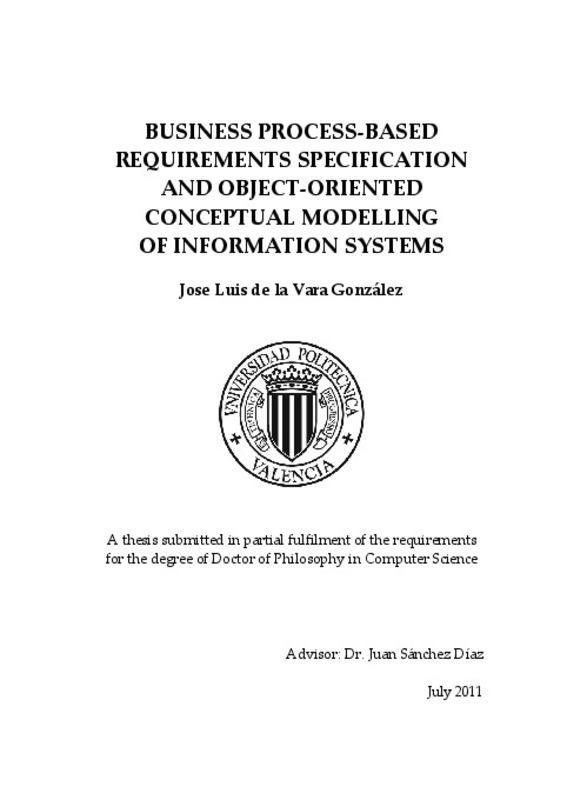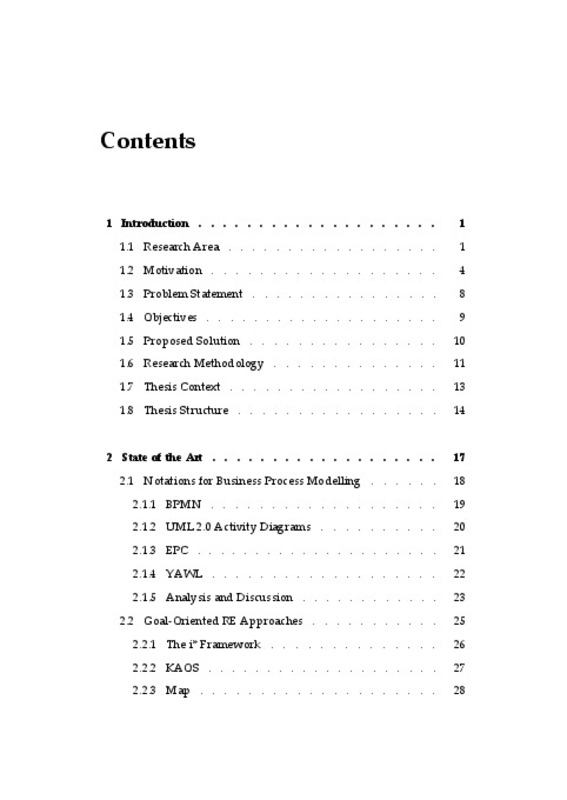- RiuNet repositorio UPV
- :
- Investigación
- :
- Tesis doctorales
- :
- Ver ítem
JavaScript is disabled for your browser. Some features of this site may not work without it.
Buscar en RiuNet
Listar
Mi cuenta
Estadísticas
Ayuda RiuNet
Admin. UPV
Business process-based requirements specification and object-oriented conceptual modelling of information systems
Mostrar el registro completo del ítem
De La Vara González, JL. (2011). Business process-based requirements specification and object-oriented conceptual modelling of information systems [Tesis doctoral]. Universitat Politècnica de València. https://doi.org/10.4995/Thesis/10251/11445
Por favor, use este identificador para citar o enlazar este ítem: http://hdl.handle.net/10251/11445
Ficheros en el ítem
Metadatos del ítem
| Título: | Business process-based requirements specification and object-oriented conceptual modelling of information systems | |||
| Autor: | de la Vara González, José Luis | |||
| Director(es): | ||||
| Entidad UPV: |
|
|||
| Fecha acto/lectura: |
|
|||
| Resumen: |
Two of the main needs when developing an information system for an
organization are that system analysts know and understand the
application domain and that the system properly supports the business
processes of the ...[+]
|
|||
| Palabras clave: |
|
|||
| Derechos de uso: | Reserva de todos los derechos | |||
| DOI: |
|
|||
| Editorial: |
|
|||
| Tipo: |
|
recommendations
Este ítem aparece en la(s) siguiente(s) colección(ones)
-
Tesis doctorales [5389]







![Text file [Text]](/themes/UPV/images/text.png)



